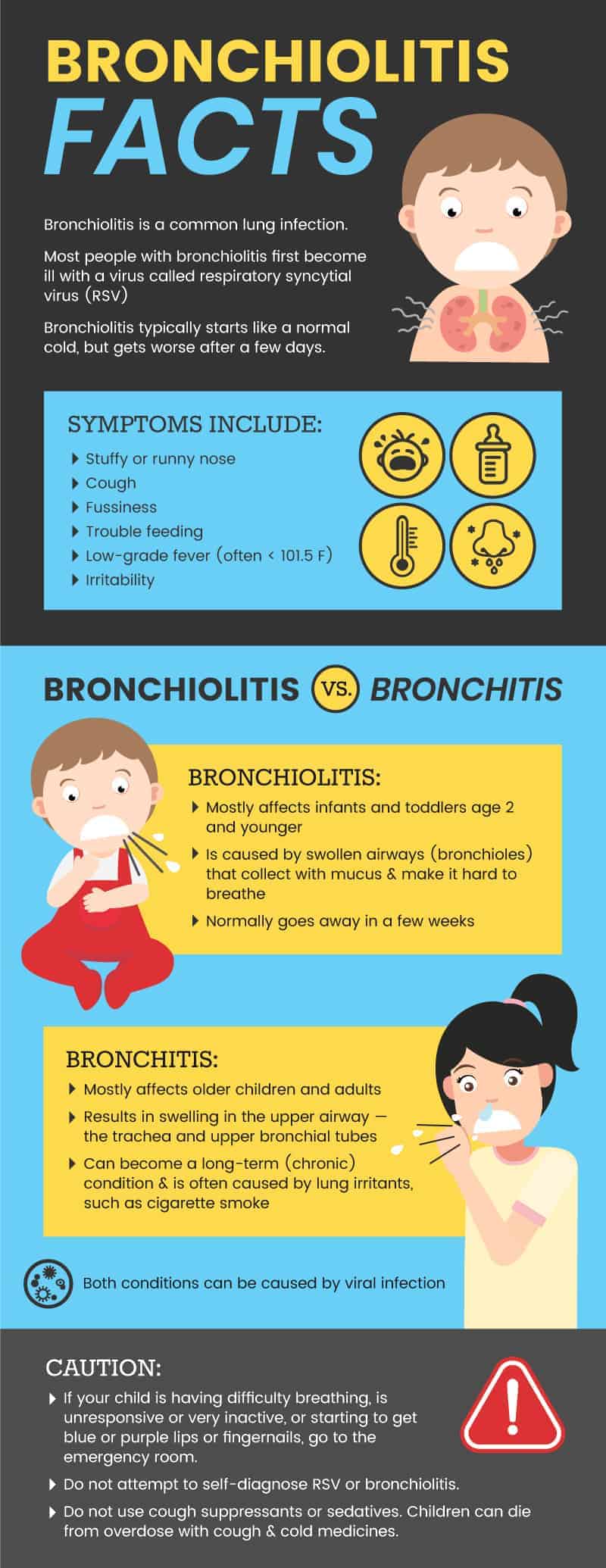Beat Bronchiolitis Blues: A Parent’s Guide to Clearing Up Your Child’s Cough
Published on: | Author: Helpful Content Writer
Welcome, wonderful parents! ? Are your little one’s tiny chuckles being interrupted by coughs and wheezes? Has the doctor used the term ‘bronchiolitis’? Well, you’ve clicked the right link! In this sunshine-filled guide, we’ll spill the beans on how to get rid of bronchiolitis and have your tot blowing bubbles of giggles again in no time!
What is Bronchiolitis?
First things first, let’s unwrap what bronchiolitis really is. It’s a common chest infection affecting babies and young children during the autumn and winter months. Tiny airways in the lungs, called bronchioles, get inflamed and clogged with mucus. This can turn your kiddo’s breaths into a symphony of wheezing, coughing, and sometimes difficulty breathing.
Signs and Symptoms to Watch For
Little noses and light coughs can soon spiral into tell-tale signs of bronchiolitis. Keep your eyes peeled for:
- A runny nose
- Persistent cough
- Increased difficulty with breathing
- Rapid or noisy breathing (wheezing)
- Fever
And remember, if your baby is under 3 months old, or has a heart or lung condition, or was born prematurely, they may need more careful monitoring and a quick jaunt to the doctor even if symptoms seem mild.
Catching Your Breath: At-Home Care Tips
Let’s turn that home of yours into a bronchiolitis-busting fortress! Often, the illness will clear up by itself, but here’s how you can support your munchkin’s recovery:
- Maintain Hydration: Offer plenty of fluids. For babies, that means regular breast or bottle feeds. If they’re struggling, try smaller amounts more often.
- Rest Up: Encourage naps and restful nights to help their little bodies fight off the infection.
- Saline Drops: To tackle a stuffy nose, saline nasal drops can be bliss. A clearer nose equals easier feeding and sleeping.
- Humidify: Dry air can annoy those sensitive bronchioles even more. A humidifier can add the moisture back into your home’s atmosphere.
- Elevate the Head: When it’s time for beddy-byes, prop their head up a bit—it can help them breathe easier.
And if there’s fever or discomfort, check with your pediatrician to see if it’s okay to give a dose of infant paracetamol or ibuprofen.
Knowing When to Seek Professional Help
Super-parents, your instincts are powerful! If you see any of these signs, it’s time to pick up the phone and dial your pediatrician or rush to the ER:
- If your little treasure is struggling a lot to breathe
- If they’re taking fewer feeds, or not having wet diapers
- If the cough is getting worse
- If they seem very tired or irritable
Trust yourself—you know your child better than anyone, and it’s always best to err on the side of caution.
Prevention is Key!
Oh, if only we could wrap our kiddos in a bubble of health! While that’s not quite possible, here are some preventive steps:
- Avoid exposure to smoke
- Steer clear from sick people (easier said than done!)
- Keep on top of hygiene—frequent hand-washing is a must
- Disinfect toys and surfaces regularly
Preventive measures can help lower the risk of your child getting bronchiolitis, but let’s be real—kiddos are curious explorers, and germs sometimes have other plans.
We’re just getting warmed up, lovely readers! Stick with us as we dive deeper into bronchiolitis treatments, when to bust out the antibiotics, and soothing strategies for your precious little one. Hang tight, because we’re on this health journey with you, all the way!

Five Things Every Parent Should Know in Preparing for Bronchiolitis
Before the sniffling begins and the thermometer comes out, why not arm yourself with some trusty knowledge? Here are five golden nuggets of wisdom to prepare you for the bronchiolitis season:
- Vaccines can be Vanguards: Ask your pediatrician about the preventive RSV vaccine, especially if you have a high-risk tot. It’s not a one-size-fits-all solution, but it could be a superhero in your child’s story.
- Recognize High-Risk Groups: Premature infants, those with congenital heart or chronic lung diseases, and those with weakened immune systems have a higher risk. Awareness is the first step to better prepare and protect your munchkin.
- Stock Your Home Pharmacy: Have a thermometer, saline drops, and a cool-mist humidifier ready. If fever pops up or noses get stuffy, you’ll be set to comfort your child quickly and efficiently.
- Create a Sick-Child Game Plan: Identify the nearest pediatric ER, pin the pediatrician’s number on the fridge, and have a childcare plan for siblings in case you need to be out the door in a jiffy.
- Teach Good Hygiene Early: Encourage your kiddos to sing their favorite tune while scrubbing their hands. Make it a fun ritual, not a chore. It’s one of the best shields against nasty germs out there.
Home Remedies and Comfort Measures
As your little one snuggles into their favorite blankie, here are some home remedies and comfort measures to soothe their symptoms:
- Steam Sessions: A steamy bathroom can work wonders. Let the hot water run and sit with your baby as they breathe in the steam to help loosen the mucus.
- Honey for Ages 1 and Up: If your child is over a year old, honey can be a natural cough suppressant. A spoonful before bedtime might sweeten their dreams.
- Gentle Tapping: Lightly tapping your baby’s back can help shift the mucus. It might just tickle them the right way to a better night’s sleep.
- Soft Comforts: Snuggles, stories, and songs can be incredibly comforting. Never underestimate the power of a parent’s touch during illness.
When to Bypass Home Remedies: Signs You Need Immediate Care
Some symptoms are red flags that signal it’s time to ditch the home comforts for professional care:
- Difficulty breathing that doesn’t improve (look for sucking-in under the ribcage)
- Bluish color around the lips or fingernails
- Dehydration signs like no wet diapers for several hours, dry mouth, or crying without tears
- Lethargy or unresponsiveness
Supporting Your Child Post-Bronchiolitis
Once the worst is over, your little warrior may still need support. Slowly reintroduce activities, and stay vigilant for any signs of respiratory distress.
- Listen to Their Lungs: Continue to monitor for wheezing or prolonged coughing, as post-bronchiolitis wheezing is common.
- Keep Up the Fluids: Hydration remains a champion in recovery, aiding in mucus breakup and preventing dehydration.
- Gradual Return to Normalcy: Don’t rush back into the bustling hustle. Gradually ease back into daily routines and play dates.
- Follow-Up Visit: A check-up with your pediatrician after recovery can ensure no lingering issues are afoot.
Sweet parents, with this knowledge in your heart and these tips in your pocket, you’re ready to stand strong against bronchiolitis. May your patience be plentiful and your little ones resilient. And remember, while bronchiolitis is hard, your love and care is mightier. ?
See more great Things to Do with Kids in New Zealand here. For more information see here
Disclaimer
The articles available via our website provide general information only and we strongly urge readers to exercise caution and conduct their own thorough research and fact-checking. The information presented should not be taken as absolute truth, and, to the maximum extent permitted by law, we will not be held liable for any inaccuracies or errors in the content. It is essential for individuals to independently verify and validate the information before making any decisions or taking any actions based on the articles.




